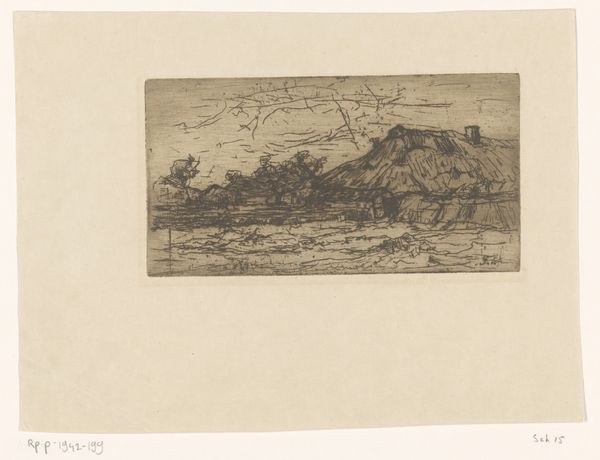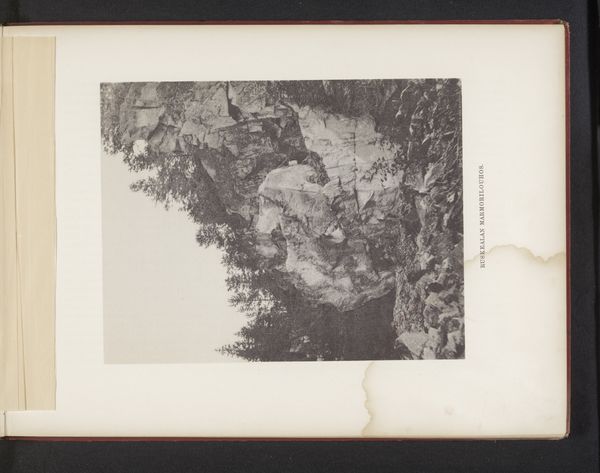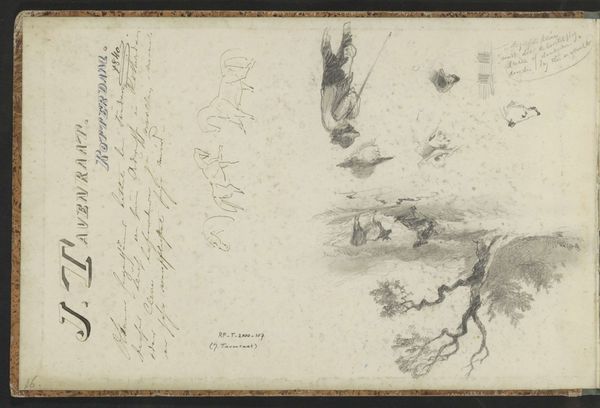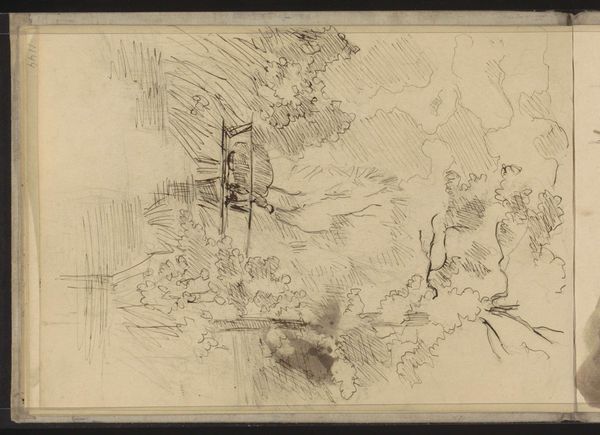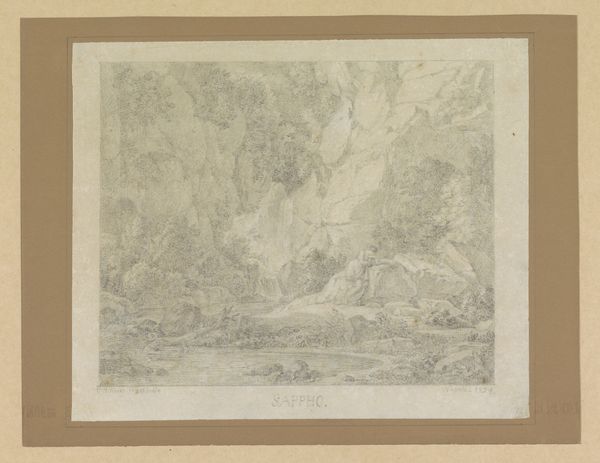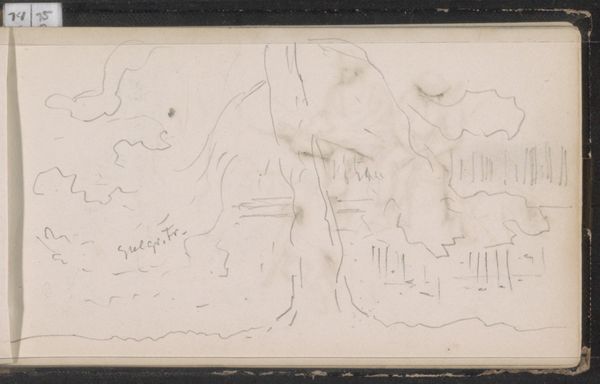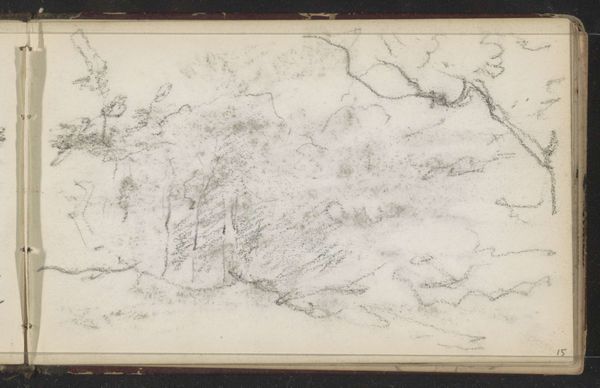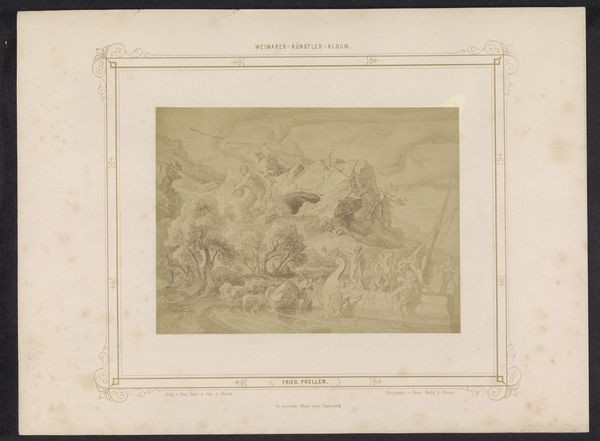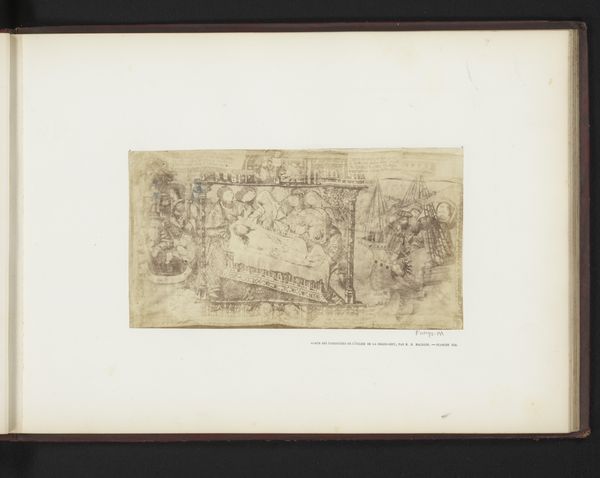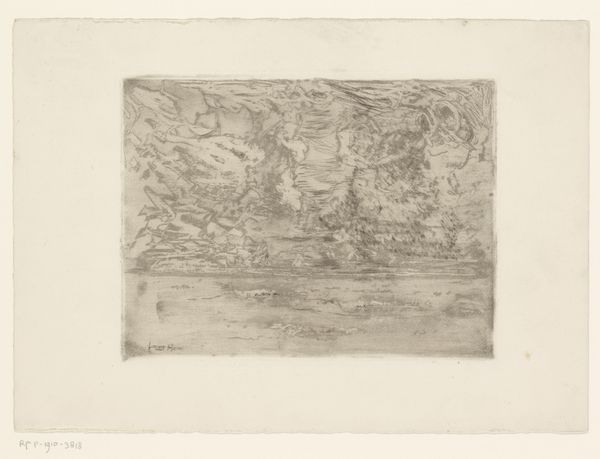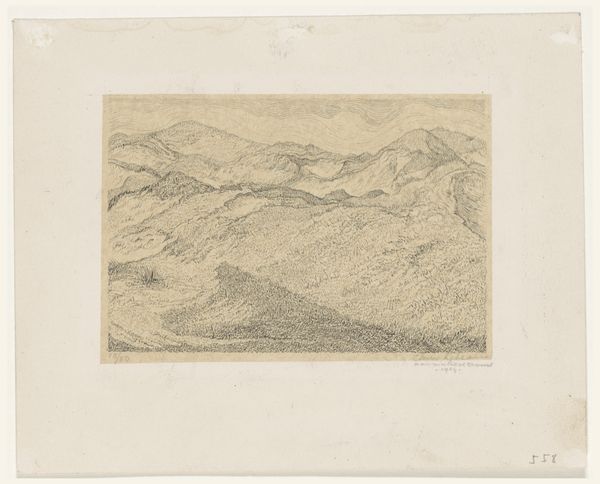
Tapijt met het oordeel van Salomo, het Laatste Oordeel in een kerk te La Chaise-Dieu c. 1868 - 1873
0:00
0:00
print, engraving
#
medieval
#
narrative-art
# print
#
history-painting
#
engraving
Dimensions: height 163 mm, width 222 mm
Copyright: Rijks Museum: Open Domain
Curator: Hippolyte Malegue's print, dating roughly from 1868 to 1873, presents a compelling reproduction of, specifically, "A Tapestry with the Judgement of Solomon, and the Last Judgment in a Church at La Chaise-Dieu." Editor: The image whispers, doesn’t it? Like peering through fogged glass at a scene heavy with story and obscured by time. The tones are so muted, sepia-toned. Curator: Exactly. Consider that this is not merely an image, but an engraving. Its value is found in reproduction, disseminating imagery and tales throughout society, beyond the elite circles who might encounter it in a grand tapestry. This piece makes visual storytelling accessible and widely consumed. Editor: I can almost feel the repetitive labor, you know? The artist transferring such detail through a physically demanding engraving process. But who *saw* it this way back then? Today, it speaks to me about production as a shared undertaking with every touch, yet… the subject feels otherworldly, even ancient. It's paradoxical, really. Curator: I understand entirely. While the tapestry it references originally held deep didactic purpose, acting as a tool of religious instruction for the largely illiterate medieval population, here we see a shift. Print culture enabled, a whole new way of accessing morality tales. Editor: Yes. Think about it – the labor of its creation, both the original tapestry weavers, and then Malegue. There's a material link there, woven through hands and years. Yet what happens when an art piece begins life like that, only to wind up here, in the rarified realm of “art”? Curator: That's exactly the intriguing duality that I experience with it, myself. On one hand, an object lessons about justice and faith, filtered through 19th-century eyes, yet on the other—it gives one cause to consider their current day parallel. What stories will we consume, share and repeat about who are the just, and unjust of our time? Editor: Precisely, it's less about dusty history and more about a looping timeline of values, made solid through art and labor. Food for thought—or for sight, rather—if you happen to think that vision matters. Curator: Well, quite. It's almost humbling how material labor gives birth to this reflection and that opens to infinite others, spanning back and leaping forward. It’s an echo in sepia tones.
Comments
No comments
Be the first to comment and join the conversation on the ultimate creative platform.
